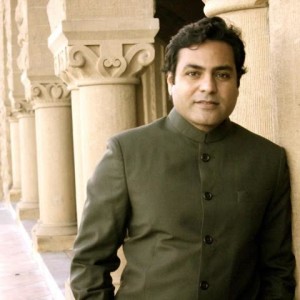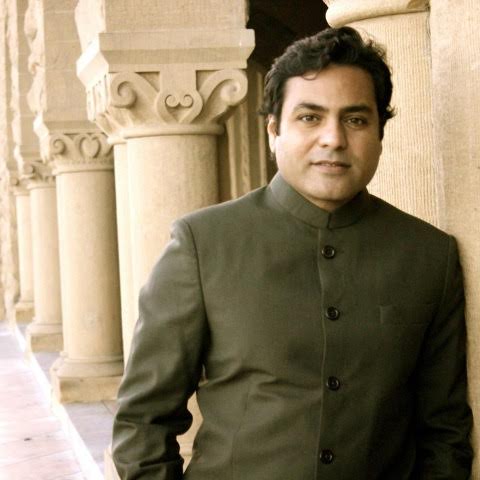
Brajesh Samarth, a lecturer of Hindi at Stanford, has recently taken on the challenge of creating a documentary about the Sikh diaspora and the 1984 anti-Sikh massacre. The Daily got a chance to speak with Samarth about the history behind the documentary and the challenging journey so far.
The Stanford Daily (TSD): In your documentary about the Sikh diaspora and the 1984 anti-Sikh massacre, what is the meaning of the film’s title, “Delayed Justice?”
Brajesh Samarth (BJ): When India and Pakistan became two nations in 1947, Sikhs also asked for their own land. There were two main communities at that time when the land was divided into two, Muslims and Sikhs. When the two nations emerged in 1947, Sikhs were also promised to be given their own land by the Indian National Congress. So they started demanding their nation around 1970s again because that promise was not kept. From 1975 to 1977, thousands of Sikhs were imprisoned because they were protesting and demanding for their own land.
In 1984, the prime minister, Indira Gandhi, ordered the military to enter the holy temple in Amritsar to take out the militants because they were collecting weapons there. Many people were killed, mostly women and children. That caused a huge protest and anger in the Sikh community. Prime Minister Indira Gandhi was assassinated by her two Sikh bodyguards on October 31, 1984. The next three days, a mob led by Indian National Congress leaders killed more than 8,000 Sikhs and about 3,000 in different parts of India. In that massacre, they burned houses, raped women and killed children. After that, the people who were leading the mob were never charged due to lack of witness and evidence.
My whole idea is to talk about the incident and reach out to the victims. So that is the “Delayed Justice” title. I want to talk about the issue and hear the voices.
TSD: What is your connection with this topic?
BJ: I have two connections, one is personal and one is interest in it. In 1984, I was 13 years old. I lived in a community where most of the community members were Sikhs. They were refugees and I was living among them. So when [the massacre] happened in 1984, many of my friends… left India [along with their families because they felt] it was not safe. [I felt that] it was a shame that our own people couldn’t be safe.
Some time ago, one of my friends from Canada contacted me and he was someone that I used to played with. It was very emotional for both of us. He asked me what I was doing in America. I said I was a student and getting a Ph.D. He then said he’d also left India because he was scared for my life. I said I wasn’t scared for my life and that I left India because I wanted to study. The whole idea was that India was still dangerous and could not protect its own people. So that’s the personal connection.
I don’t know why and how but I’ve always been interested in the displacement of certain populations, so I pursued that in my Ph.D. I studied language and identity in diaspora in the United States. What happens to people who come from the same country and their second or third-generation children being in America? Whether they are Asian or Indian or European, how do they struggle the whole time with who they are? I’ve always been interested in human displacement due to many different reasons. So that’s my connection.
TSD: Is there anybody else that you are working with? Who does your team consist of?
BJ: This team has a lot of people: the [about 15] acting members, myself, Simran Luthra — she’s the person who collects all the interviews — and a young woman who is very enthusiastic named Sarah Tang. We also have a team of people like Joe Adler who has produced more than 20 documentaries about Asia.
TSD: How you will create this documentary? What needs to be done?
BJ: When making this documentary about the diaspora, instead of reaching out to people and finding them, it’s more like a snowball where a couple of people become a huge crowd. The work takes a lot of time. Mostly I travel to different parts of California. I leave on Fridays, Saturdays and Sundays to meet people. We go cities such as San Francisco, Sacramento, or down south to talk to people.
It really takes time. A lot needs to be done. We have people like scholars that we need to approach and we know people in different parts of the United States. Especially since this is a documentary, we want to meet them in person. That needs a lot of money. So we are looking for funding. At this point, we have a lot of interviews to be done. We are trying to reach people who were victims. The thing is that people are aware of what we are doing and that they respect what we are doing and are encouraging us.
TSD: Who is the target audience of this documentary? Why do you think making this documentary is important?
BJ: When the massacre happened in 1984, the government did not let people know what happened and there are still many people who were not aware of what happened. People were not allowed to go and see the sight. The target audience are the people who are unaware of the fact of what happened in India. The data that we lost can only be recovered by talking to people one at a time, to hear their voices. Any body of people who live in a country have their fundamental right to be heard and to demand for justice. I believe it is our job to acknowledge what happened. It happened and what can be done? I’m not talking about punishment but rather that these people should be heard. I think it is our responsibility to work on the issue.
TSD: Is there anything new you have learned from your research on this topic? Have you encountered any surprises in the making of this documentary?
BJ: I was driving to Sacramento and I saw a group of elderly people sitting under a tree. I was taking photos and I approached them. I began explaining my question in English, that I was here to collect data about who they were […] One of them told me to change the direction of my documentary. I had wanted to simply document people talking about the culture and learning about life in America. He said that I had to make the movie because the Indian government considered us savages. He said that I should tell the government to not consider us as savages and to reopen the cases of the 1984 massacre. I was surprised that people wanted to talk about that.
The important thing is to just learn the whole truth about it and bring it to the rest of the world. If Indians are not aware of the fact, how can the rest of the world be aware?
Contact Emma Chiao at emma1cor1348 ‘at’ gmail.com.
Correction: An earlier version of this article included some factual inaccuracies. The Daily regrets the error.
